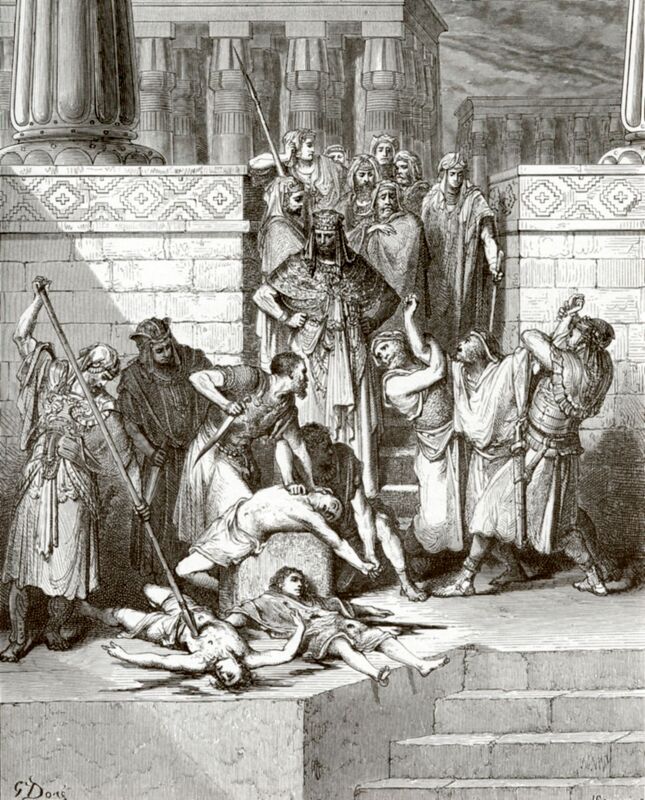|
Les Juifves takes the story of the Jews subjugated by King Nebuchadnezzar and raises it to the level of intense tragedy which foreshadows those of Corneille and Racine in all but location. Whereas the writers of the 17th century drew most of their material from Greek and Roman antiquity, their Renaissance predecessors favored biblical adaptations for the stage as a part of a campaign to make a distinctly French theatrical tradition. Clearly, a part of the identity of “the most Christian nation” was its religious fervor. To return to the connections between Corneille and Racine, the clearest examples here its thematic ties to Cinna and Andromaque. Hamital, the mother of the enslaved Jewish king, is a mirror of Andromaque: the queen of a vanquished nation, a widow, begging for the life of her son, and slightly suicidal. Some of Andromaque’s scenes are played out in reverse in Les Juifves, such as when Hamital finds pity from the Queen whereas Andromaque finds nothing but rebuke from Hermione. To a lesser extent, Cinna’s preoccupation with clemency and the qualities befitting a ruler can be seen in the back and forth between Nebuchadnezzar and several foils. As in Andromaque, Cinna’s plot follows the alternate route presented to King Nebuchadnezzar who in Les Juifves murders the Jews and blinds their king. All this is to say, that thematically, 16th and 17th century writers would appear to be interested in similar topics, with similar opinions on those topics, but taking opposite approaches towards those ideals.
0 Comments
Leave a Reply. |
Jennifer KellettM.A. French Literature Florida State University Archives
June 2021
Categories |
Photos used under Creative Commons from mharrsch, Renaud Camus

 RSS Feed
RSS Feed
